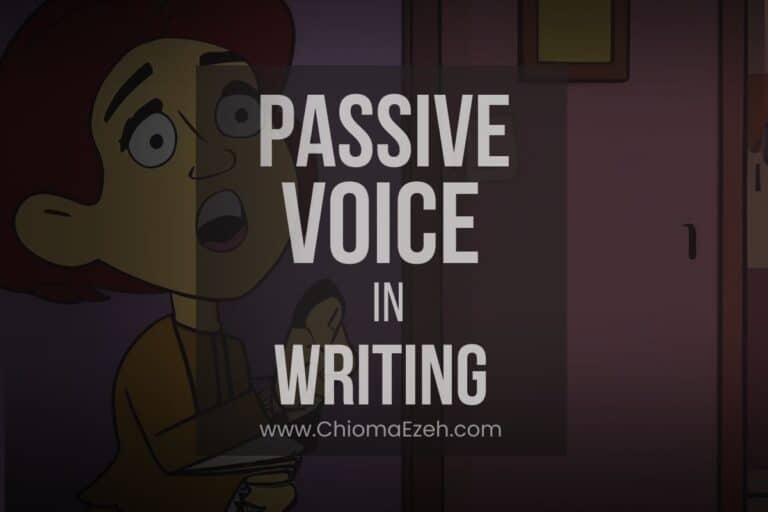13 Literary Devices to Unlock Your Writing Potential
Aspiring authors and writers may be daunted by the copious amount of literary techniques at their disposal when fashioning their narratives. But understanding these tools can be essential for creating powerful, evocative written works.
In this post, we’ll discuss what literary devices are and why they’re important in writing. Thereafter, we’ll dive into a comprehensive list of the literary devices you should be using as an author.
👉 See our guide on themes in literature
Let’s Talk
Are you a writer aspiring to pen a masterpiece that never fails to captivate? Look no further. Reach out to us and uncover how we can help you to take your writing to unprecedented heights!

What are literary devices?
Literary devices are tools used by writers to help convey their stories, ideas, and emotions. They can be as simple as a metaphor or as complex as an allegory. Literary techniques are utilized in all genres of writing, from novels to theatrical works to verse.
Literary devices allow authors to paint vivid mental pictures for readers and evoke emotions with symbols, metaphors, imagery, and personification. Using these techniques effectively helps writers create great stories without needing extra words to explain them.
Why are literary devices important in writing?
Using literary devices also adds variety to your writing, and that makes reading more interesting than if it was written plainly without any figurative language. This keeps things fresh while avoiding monotony too. It is no wonder why so many authors rely heavily on literary devices when crafting their stories.
Overall, the use of literary devices can bring added depth to a piece of writing that might otherwise be flat or boring. For example, when describing a character’s emotions or feelings about something, the use of metaphor or simile can give readers insight into how they feel without having to directly explain it with words.
Literary Devices List
1. Alliteration
Alliteration is the repetition of consonant sounds at the beginning of words in a phrase or sentence, such as “Peter Piper picked a peck of pickled peppers.” This literary device can be used to emphasize certain ideas and create memorable phrases that are easy to recall.
2. Metaphor
An implied comparison between two different things without using like or as. A metaphor is an implied comparison between two unlike things, such as saying someone has “a heart of stone” when referring to their coldness towards others. Metaphors help writers convey complex ideas with fewer words than would otherwise be necessary and can also add emotional depth and power to writing.
3. Simile
Similar to metaphors, similes are comparisons between two different objects or concepts using the words “like” or “as”; for example, describing someone as having eyes like stars means they have bright eyes that sparkle in the light. Similes can make descriptions more vivid and interesting while conveying meaning quickly without being overly wordy or clichéd
4. Personification
Giving human characteristics to non-human objects and animals, making them seem alive and relatable to readers. Personification gives human qualities to non-human entities. For instance, stating that the clouds were ‘weeping’ implies a sense of sadness on behalf of something which cannot feel emotions. This type of literary device allows readers to understand what is being portrayed through analogy with an emotion they can relate to.
5. Hyperbole
Exaggeration for effect, often used in literature for comic relief or emphasis on a point being made by an author. Hyperbole exaggerates an idea beyond reality for dramatic effect. For instance, saying you had so much homework it was enough to fill up an entire room emphasizes how overwhelming it felt even if this isn’t literally true in most cases. Hyperbole helps bring attention and emphasis on important points by making them seem larger than life.
6. Oxymoron
An oxymoron combines contradictory terms into one phrase, such as ‘deafening silence’. It serves as a rhetorical device by adding complexity, ambiguity, humor, irony, tension, etc., whilst also providing insight into abstract concepts which may otherwise be difficult to describe accurately
7. Symbolism
Representing ideas through symbols instead of literal descriptions; can be anything from colors to characters that stand for certain concepts throughout a work.
Symbols represent something – usually abstract ideas – by associating them with physical objects; e.g., using a dove symbolizes peace. By using symbols rather than explicitly stating what these underlying meanings might be directly, authors are able to engage their audience more deeply while creating powerful imagery along the way
8. Irony
Saying one thing while meaning another; usually involves some kind of contrast between expectations and reality. Irony involves expressing opposite sentiments from those intended; e.g., telling someone good luck before they fail at something ironically suggests bad luck instead. There are three main types of irony — verbal (words), situational (events), and dramatic (audience awareness) — each serving its own purpose depending upon the context.
9. Imagery
Descriptive language that evokes sensory experiences such as sight, sound, smell, etc., helping readers visualize what is happening in the story more vividly
10. Onomatopoeia
Onomatopoeia refers to words whose sound imitates their sense; e.g., hiss, buzz, etc. These serve to evoke strong feelings within readers about whatever topic is being discussed because it captures not only visual elements but auditory ones too.
11. Repetition
Reinforces key points made throughout writing by repeating certain phrases multiple times until they become firmly embedded within readers’ minds. This technique adds emphasis while helping ensure your message remains clear even after several readings.
12. Foreshadowing
Hints and clues in a story that suggest what will happen later on, create suspense and anticipation for the reader.
13. Allegory
Using figurative language to represent abstract concepts with tangible images.
👉 See our guide on writing and history of writing
How can you use literary devices to enhance your writing?
There are several ways to use literal devices to enhance your writing. For example, the most common literary device is the use of imagery. This involves using words that evoke images in the reader’s mind such as “the wind howled like a wild animal” or “a soft blanket of snow covered the ground.” Imagery helps create vivid mental pictures for readers and helps them connect with characters and situations on an emotional level.
You can also use symbolism to add depth and complexity to your story without needing extra words or dialogue to explain it. For instance, using phrases like “his face suddenly turned blue” (blue representing sadness) or “calm as a dove” (dove representing peace).
Authors can also use metaphors to make subtle points about their subject matter while still keeping it interesting for readers. For example: “His heart was an iceberg floating through icy waters”. Here we see how the author has compared his character’s feelings of loneliness and isolation with that of an iceberg adrift at sea – conveying his emotion without having him directly say it out loud.
Lastly, you can use personification to bring life to a piece. For example, phrases such as “the sun smiled down on us” instead of just saying “it was sunny” often give life-like qualities to otherwise mundane subjects. This makes reading more enjoyable and easier for readers.
FAQs On List of Literary Devices
How Many Types Of Literary Devices Are There?
Generally, authors use at least 20 distinct categories of literary devices to create their works of art. Figurative language, symbols, irony, allusions, metaphors, and similes are some of the various literary techniques used in writing.
What’s A Literary Device Example?
An example of a literary device could be the use of metaphor, which makes an analogy between two disparate objects or ideas to emphasize their connection. For instance, if someone were describing the sky as being “as blue as sapphires,” they would be using metaphor to emphasize how intensely blue it was.
Final Notes on Literary Devices List
Writing with literary devices can help to create a captivating story that readers will remember. Aspiring authors ought to set aside time to comprehend every literary device and how it could be employed so as to maximize the potential of their tales.
With these tips on understanding the different types of literary devices, aspiring authors now have all they need in order to become successful writers.

![How to Develop Your Writing Style As An Author [7 Tips]](https://chiomaezeh.com/wp-content/uploads/2023/03/how-to-develop-your-writing-style-768x512.jpg)
![How To Format Dialogue In A Story [Tips & Examples]](https://chiomaezeh.com/wp-content/uploads/2023/03/How-to-format-dialogue-in-a-story-2-768x512.jpg)
![How to Create Tension In A Story With Setting [Examples]](https://chiomaezeh.com/wp-content/uploads/2023/04/how-to-create-tension-in-a-story-with-setting-768x512.jpg)
![How to Overcome Writer’s Block: 7+ Tips That Work [Exercises]](https://chiomaezeh.com/wp-content/uploads/2023/01/How-to-overcome-writers-block-768x512.jpg)
![6 Powerful Elements Of Dialogue Writing [Tags, Action Beats, Subtext & More]](https://chiomaezeh.com/wp-content/uploads/2023/03/Elements-of-dialogue-writing-768x512.jpg)
